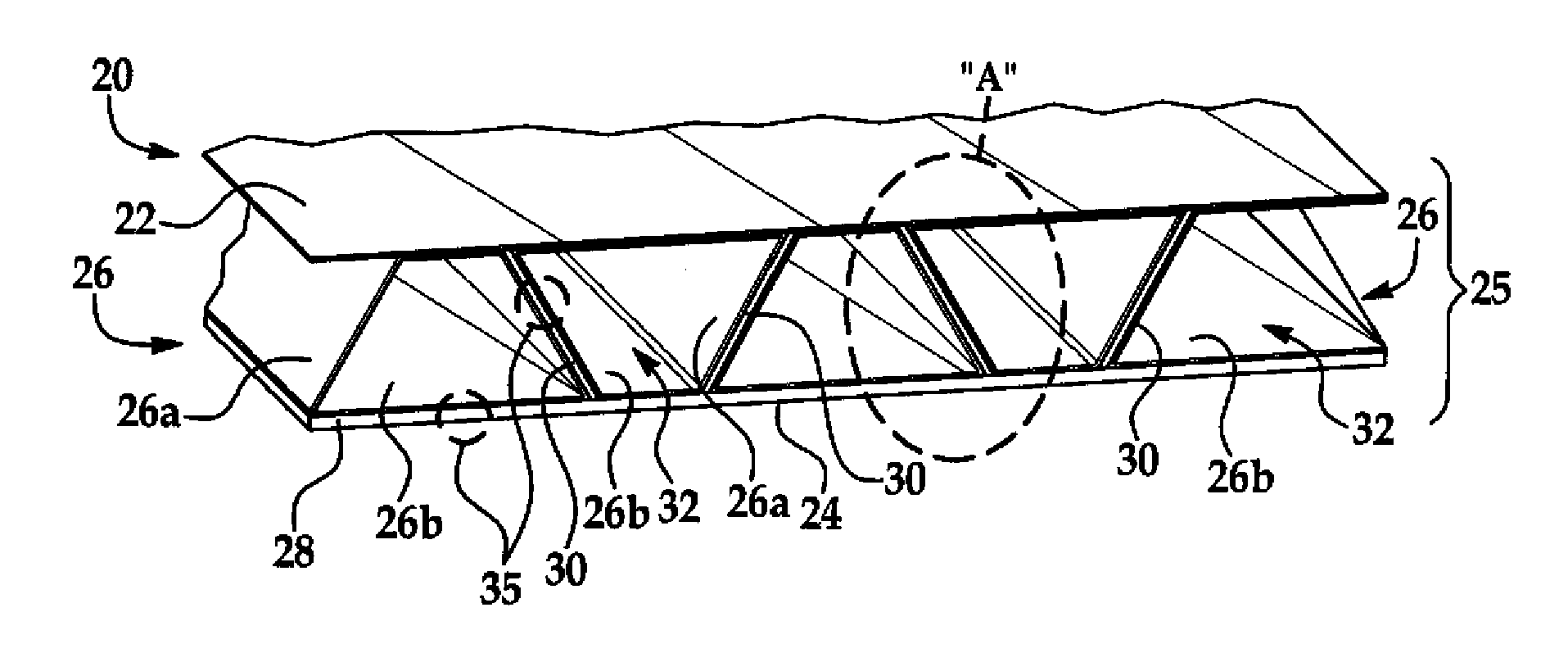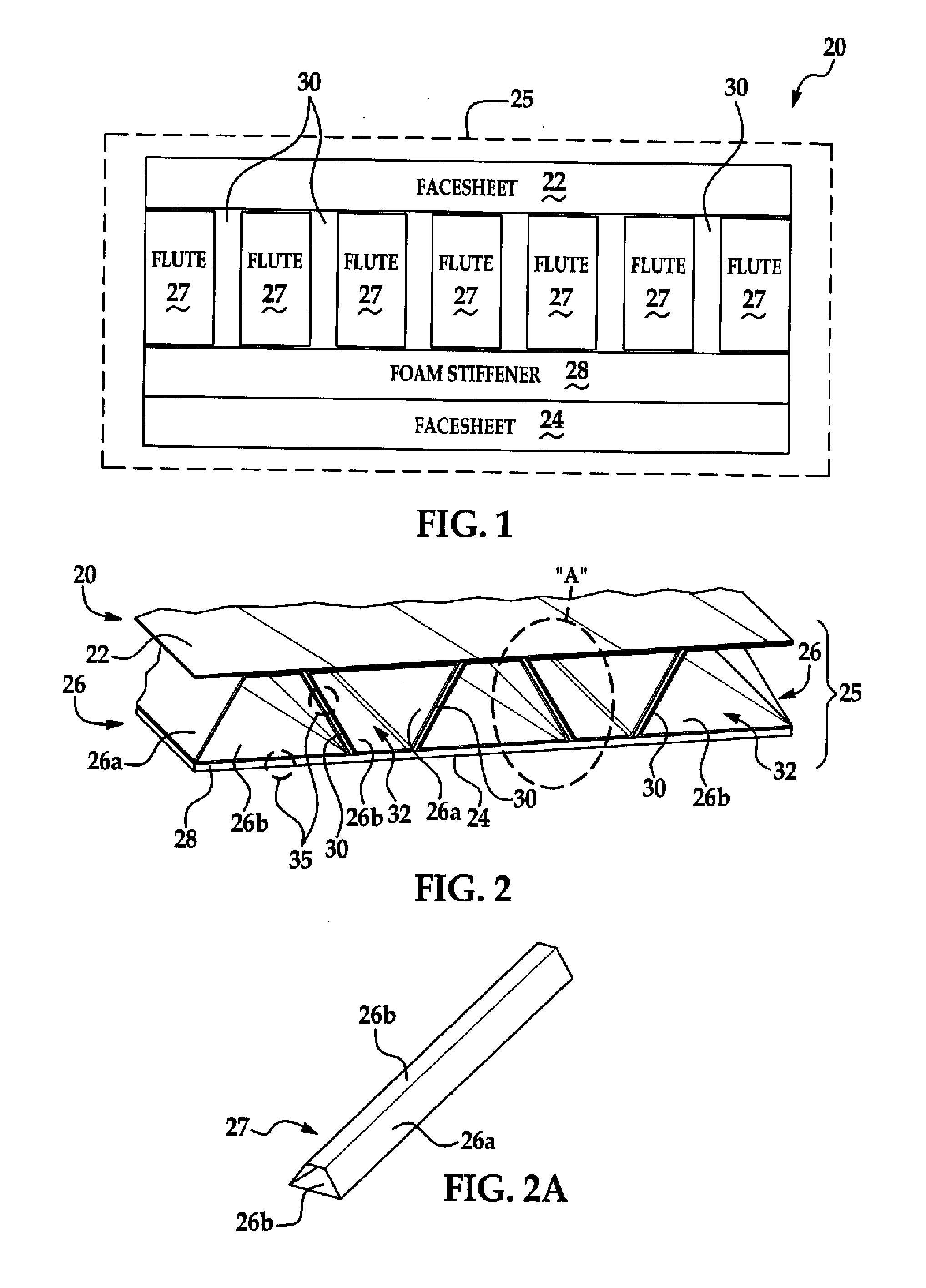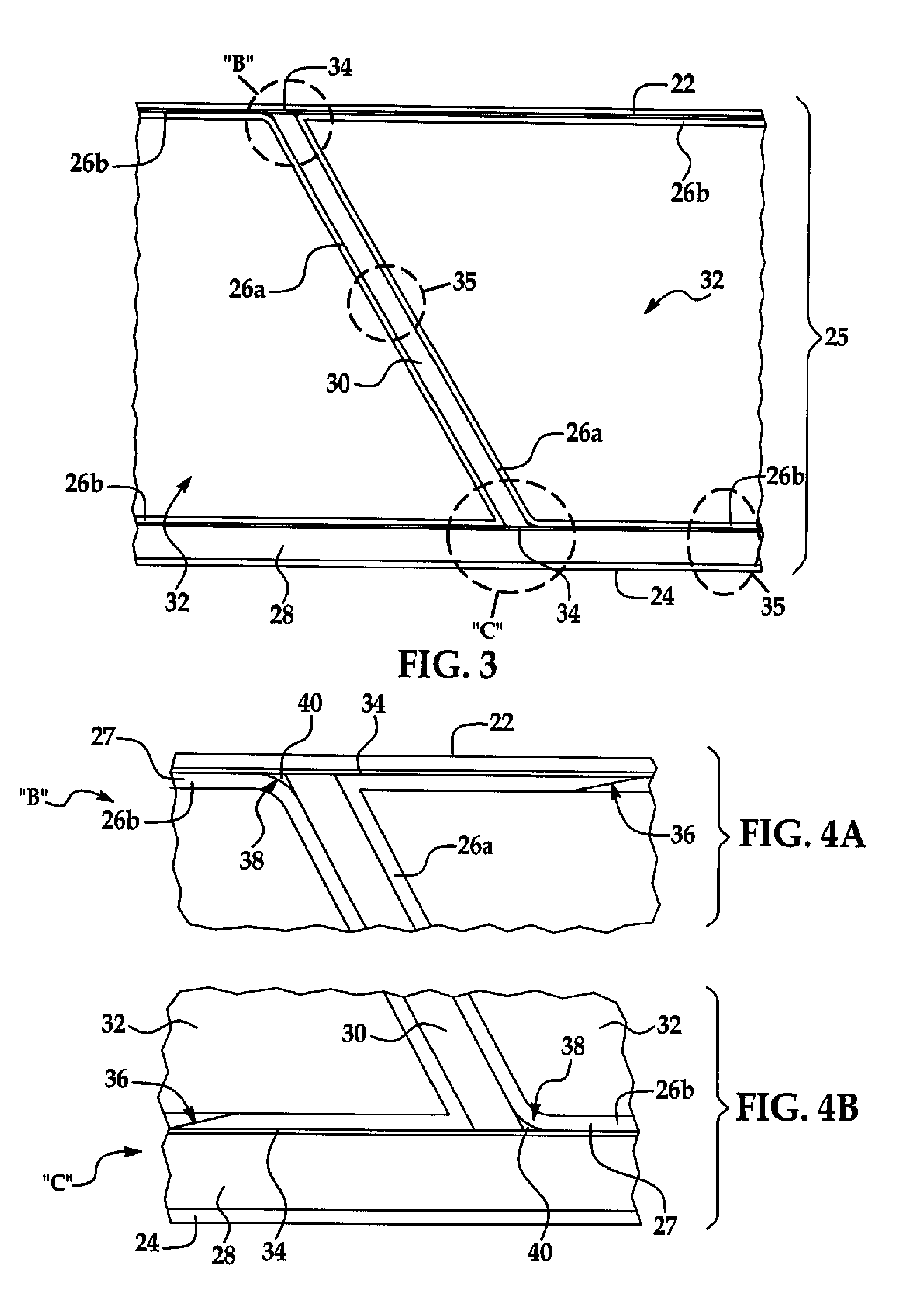Composite Truss Panel Having Fluted Core
a composite truss panel and core technology, applied in the field of composite structures, can solve the problems of difficult use of composite materials for fuel tanks, laminated fluted design, and the need to carry the required compression and shear load, and achieve the effects of reducing weight, buckling, bending, and increasing the overall structural properties of the truss panel
- Summary
- Abstract
- Description
- Claims
- Application Information
AI Technical Summary
Benefits of technology
Problems solved by technology
Method used
Image
Examples
Embodiment Construction
Referring first to FIGS. 1, and 3, the disclosed embodiments generally relate to a composite truss panel 20 which may be used to form a variety of structures such as without limitation, a cryogenic fuel tank (not shown) for aerospace vehicles.
The truss panel 20 broadly comprises a first sandwich 25 that includes a fluted core 26 sandwiched between first and second, generally parallel facesheets 22, 24, and a second sandwich 35. As will be discussed later, in some embodiments, the facesheets 22, 24 may not be parallel to each other. Each of the facesheets 22, 24 may comprise one or more plies of a fiber reinforced resin, such as carbon fiber epoxy. In a cryogenic fuel tank application, facesheet 22 may comprise an inside wall of the tank, while the facesheet 24 forms the outer wall. As will be discussed below in more detail, each of the flutes 27 may also be formed from a fiber reinforced resin material which may comprise one or more plies of a woven or knitted fabric that is cured t...
PUM
| Property | Measurement | Unit |
|---|---|---|
| density | aaaaa | aaaaa |
| density | aaaaa | aaaaa |
| density | aaaaa | aaaaa |
Abstract
Description
Claims
Application Information
 Login to View More
Login to View More - R&D
- Intellectual Property
- Life Sciences
- Materials
- Tech Scout
- Unparalleled Data Quality
- Higher Quality Content
- 60% Fewer Hallucinations
Browse by: Latest US Patents, China's latest patents, Technical Efficacy Thesaurus, Application Domain, Technology Topic, Popular Technical Reports.
© 2025 PatSnap. All rights reserved.Legal|Privacy policy|Modern Slavery Act Transparency Statement|Sitemap|About US| Contact US: help@patsnap.com



